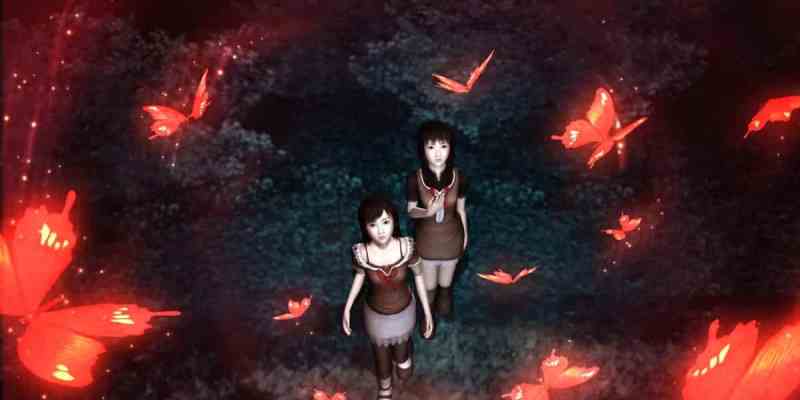“The two chosen children will be carried to heaven on the wings of a butterfly.”
Horror games seek to evoke real, primal emotion with varying degrees of success. Fatal Frame II: Crimson Butterfly manages this in spades. It takes the fear of abandonment, separation anxiety, and the desire to run from its stifling influence and imbues it into an upsetting, deeply personal, and chill-inducing narrative of loss, blood curses, and the oaths of sacrificial lambs.
Crimson Butterfly follows twins Mio and Mayu Amakura — the former an independent and protective sister, the latter a girl with abandonment issues caused by an incident with Mio. The twins were playing on a steep forest path, and in her struggle to keep up with Mio, Mayu slipped and fell into a ravine, injuring her knee. Though Mio saw this and ran immediately to get help for her sister, Mayu saw her running as a sign that she had been abandoned there in the dirt.
Years later, they return to the site of their childhood memories one last time before the construction of a dam floods the area forever. Mayu suffers a permanent limp and a bandaged leg from her past injury. Unbeknownst to them, Mio and Mayu mirror long dead shrine maiden twins, Yae and Sae Kurosawa, and their presence in the forest will reawaken the cursed All God’s Village, setting in motion an unstoppable chain of events.
Whilst attempting to escape from having to perform the Crimson Sacrifice Ritual, which demands the emotionally stronger twin to strangle the weaker to unite their souls and feed the abyss of the dead, Sae Kurosawa too fell in the process and injured her leg. However, unlike Mayu, Sae was abandoned by her sister, and she allowed herself to be hanged with a noose and thrown into the sacrificial pit alone. The ritual failed though, triggering the Repentance.
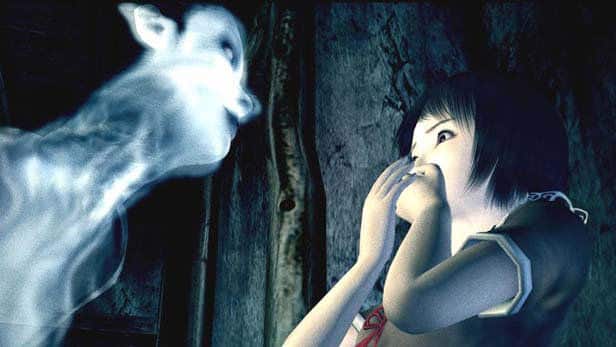
Sae’s spirit, potentially brokenhearted and enraged at her abandonment and separation from her sister, burst from the abyss. Darkness came with her, killing most of the villagers and plunging the village into eternal night where the fateful events replay on repeat until the ritual is properly completed, the curse ensuring nobody will ever be able to leave Sae alone again.
It makes perfect sense then that Sae’s spirit, in the form of a crimson butterfly, lures the emotionally fragile and weak Mayu into the cursed village, preying upon her same fear of abandonment and separation anxiety.
While for obvious reasons Fatal Frame II hinges on the relationship between shrine maidens Yae and Sae, they are not the only siblings ripped apart and driven mad by ritual sacrifice. Early into the hunt for her sister, Mio comes upon the spirit of Itsuki Tachibana, who himself strangled his twin Mitsuki to death in the Crimson Sacrifice ritual years ago. He is helpful, mournful, but, much to Mio’s dismay, just another spirit, his hair turned white from the trauma of murdering his younger twin. Seeing Mio and interpreting her as Yae, Itsuki begs her to find her twin Sae and leave that place before the sacrifice can be initiated, even though he knows that the failure of the ritual has real, tangible consequences for his people.
This is because his ritual was one of the rare failures of the Crimson Sacrifice. Perhaps because his heart wasn’t in it or because he and his twin loved each other too much, their ritual failed. Itsuki became traumatized and the village underwent plagues, famine, and the sudden death of its crops and animals for the next decade until the next emergency sacrifice was required: that of Yae and Sae Kurosawa. Itsuki later attempted to prevent their sacrifice, even at the cost of the village, but his efforts were unsuccessful and he hanged himself in response.
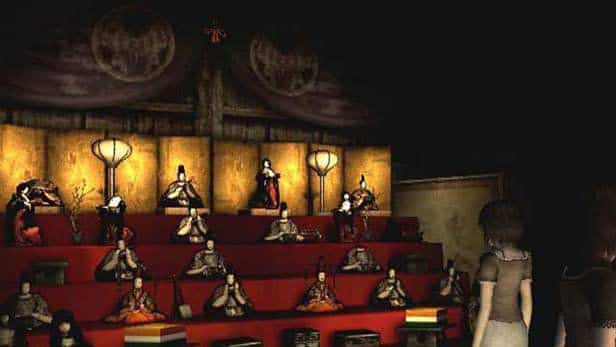
Additionally, there was yet another, more secretive family in the village, that of Akane and Azami Kiryu. Akane had to sacrifice her twin at a particularly young age. The abandonment and painful separation from her other half took a toll on her mental health, affecting her ability to eat and sleep.
To alleviate Akane’s pain, her father made a life-sized replica doll of Akane’s sister. For a while this seemed to heal the hole left within her, but Akane would speak to the doll constantly, whispering in the dark with strange glances towards others in her vicinity. It gradually became apparent that an evil spirit, drawn by Akane’s loneliness and suffering, had possessed the doll and inserted itself into Akane’s consciousness. When her father attempted to destroy the doll, Akane murdered him, and her soul was taken by the spirit.
Mio later faces Akane’s ghost inside the long-abandoned house, and Akane begs Mio to kill her. It’s a horrible end for a child, and one that is echoed in the climax of the story when Sae finally takes over Mayu in totality.
Throughout Fatal Frame II: Crimson Butterfly, Sae exhibits increasing influence over Mayu. Sae leads Mayu in a trancelike state across the empty village, seeking some way to fulfill her desire to be one with her twin Yae. However, Mio, like Yae, wants nothing to do with fulfilling the ritual, and in the face of this second abandonment, the full wrath of Sae’s spirit is unleashed.
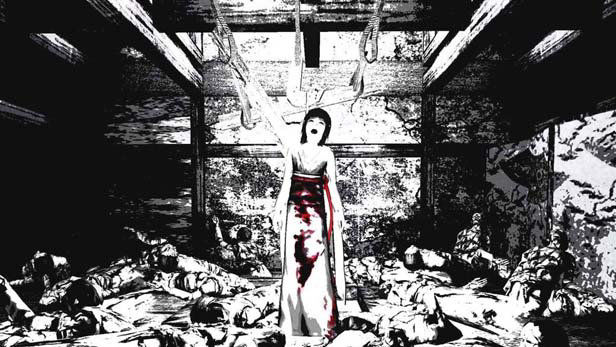
Your first glimpse of the two weak twins’ consciousnesses intertwined is in the garden of an abandoned mansion. Mio enters a dark room to see Mayu in the center, entranced, stock-still, with flashes of Sae’s spirit in a bloody kimono laughing maniacally standing over her kingdom of corpses. Sae unleashes a powerful spirit upon you, screeching after it, “Go ahead! They’re all dead!” in reference to the bodies at her feet, the dead scattered all over the village, the corpse of Itsuki hanging by his noose, and perhaps the knowledge that Yae died by the noose as well, in the garden of the cursed Himuro Mansion.
After this confrontation, Mayu’s personality rapidly changes. She fluctuates from calling you Mio, to sister, to finally Yae exclusively, Sae taking more of a hold over her psyche the more she senses Mio trying to take Mayu away from the village. Sae’s desperation culminates in her actually leaving her host’s body and pursuing Yae through the abandoned buildings, laughing and taunting her with comments like, “You won’t leave me again will you, dear sister? I’ve been waiting and waiting for you.” It’s simultaneously terrifying and somber, being pursued by this unimaginable malevolence that all began with a girl’s desire to be reunited with her sister.
Eventually, there is no choice but to continue forward into the bowels of the cave containing the pit into which the sacrifices are thrown. On your final journey downwards, the spirits of Yae and Sae occasionally walk around near you, though strangely Sae is no longer hostile.
Their journals are found everywhere, scattered about the floor. Yae wanted to escape and live her own life. Sae expressed trepidation and neurosis about her sister possibly having a life without her, having independent lives. It’s the last thing she wanted. She latched fully onto the myth that the weaker twin’s soul will join with the stronger’s after the ritual and that they would never be apart again, which continues on as acted out with Mio and Mayu.
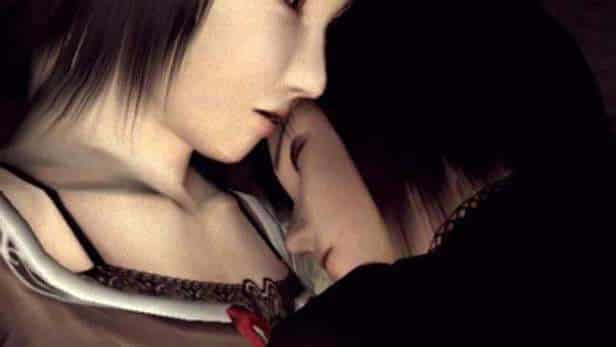
But this time, this cycle ends differently.
Mio sees her sister near the sacrificial pit, waiting for her. Like Sae, Mayu begs her sister to kill her, saying she wants to be with her, that it’s alright. She delicately puts her sister’s hands around her throat. Mio squeezes until all life leaves Mayu’s body, present and past merge, and Mayu, Sae, and the lost souls of the village are finally put to rest. It leaves Mio to run through the forest, traumatized, chasing the memories of crimson butterflies and Mayu’s last gasping words:
“Thank you.”
The tragedy of Fatal Frame II is that even when the “weaker” twins, chosen for their fear of abandonment by the “stronger,” are given their desired release in death, that pain and guilt follows the survivor. It ultimately curses their lives figuratively as much as actual curses do. The village may be freed from its purgatory, but the feelings that decimated it in the first place haven’t been resolved — only repurposed, reshaped into survivor’s guilt and shame. The many twins were never truly one; rather, one’s neurosis was simply quelled while transmitting it elsewhere.
